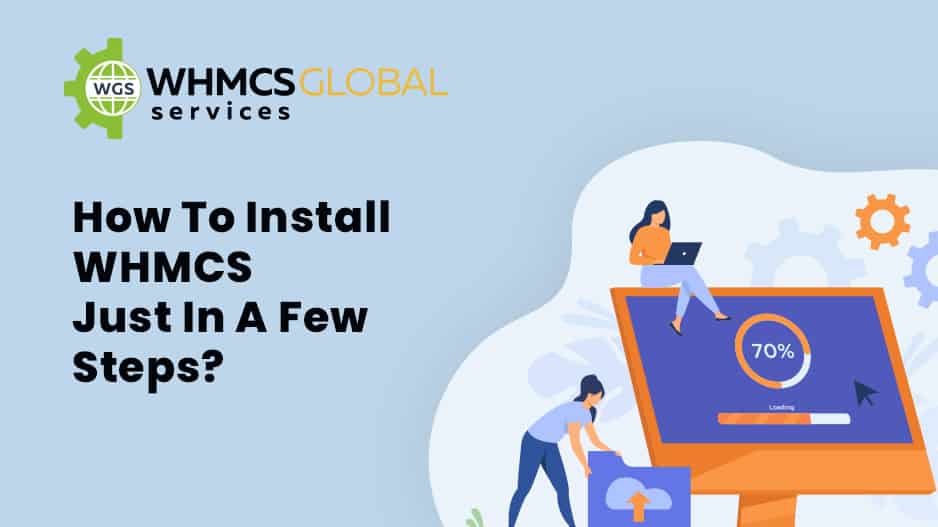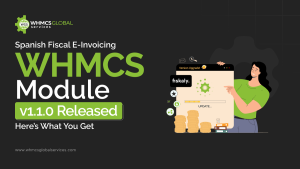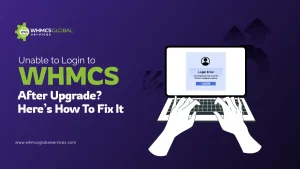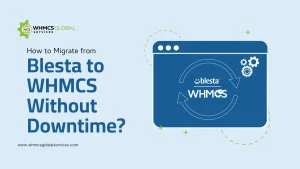
Planning to install WHMCS to automate your web hosting business? Great choice!
With advanced tools from WHMCS, you can boost up the profit of your business. Looking for a complete guide to install WHMCS? If yes, then we can help you out.
Have a look at the steps you need to follow to install WHMCS.
Let’s get started!
Step 1. Download WHMCS
If you want to directly download WHMCS then visit here.
Are you a reseller customer? If yes, then you must have obtained your license key from a reseller but no login for our member’s area. Isn’t it? Your reseller can provide the latest WHMCS files in this case.
Step 2. Install Ioncube
How to protect the WHMCS source code? ionCube Loader® is used to encrypt the WHMCS and protect the source code. Usually, hosting providers prefer to compile iobCube support into PHP.
Need help to install ionCube on your server? You can explore the internet for IonCube Installation Tutorial.
Step 3. Create Database
How to store settings and data? Well, WHMCS uses a MySQL® database. During the installation process, you can create one database or you can choose to create one before you begin.
You can check the Database Setup tutorial on the internet for more information. You may get different tutorials for creating databases in cPanel & WHM and Plesk.
Step 4. Restrict Database Privileges
- INSERT
- SELECT
- DELETE
- UPDATE
- LOCK TABLES
- CREATE
- ALTER
- DROP
- INDEX
Step 5. Install WHMCS
Let’s have a look at the following process to install WHMCS:
-
- First, find the .zip file and unzip the content to a folder on your computer.
- Second, change the name of the file from configuration.php.new to configuration.php.
- Third, the entire WHMCS folder needs to be uploaded to your website. Facing a problem with uploading the folder? Try uploading the folder in binary mode.
- Rename the folder such as billing. It is an optional step. However, you can’t name the installation folder as admin as it is used by the administration area.
- Then navigate the installation script and click on it to run the installation. and in case if you see an error related to ionCube then perform the ionCube steps mentioned above.
- Follow all the instructions like entering the license key, file permissions, and so on to install the WHMCS.
Once done with this delete the installation folder from the web server and keep a check on the configuration.
Step 6. Installing WHMCS in cPanel
- Do you use cPanel? Want to install WHMCS there? Just follow these steps and your task will be done.
- The first thing to do is to check whether the hosting provider has installed WHMCS using WHM software.
- Then log in to your cPanel account and there click on the site software icon.
- Then you will be able to see the option of WHMCS click on it.
- Choose the domain you want to install WHMCS in.
- Then click on the install option.
- This can take up to 30 seconds to install. After it finishes, you’ll see a message of success, a link to the login page, and the default login credentials automatically generated.
- Then click on the link which is provided when you log in for the first time.
- The interface will prompt you to check and agree to the End User License Agreement upon first logging in.
- In this step, you have activated WHMCS. If you already have one, enter an existing WHMCS license key to do this, or follow the link to purchase a new license.
- Once you are done with entering the license key Click Activate to validate and complete the process.
Your WHMCS is ready to use now!
Find Out How To Install A WHMCS Theme Or A Template?
Post Installation Suggested Steps
Configure WHMCS in the following order
- The very first thing to do is to perform further security steps.
- Log in to your account and then configure its setting. (Configuration > System Settings > General Settings or, prior to WHMCS 8.0, Setup >General Settings).
- In this step all you have to do is to set up the payment gateways, (Configuration > System Settings > Payment Gateways or, before WHMCS 8.0, Setup >Payment Gateways).
- Then set up the products and services you are offering (Configuration > System Settings > Products/Services or, before WHMCS 8.0, Setup >Products and Services).
- In this all you have to do is to configure your domain pricing (Configuration > System Settings > Domain Pricing or, before WHMCS 8.0, Setup > Domain Pricing).
- Then set up the support ticket departments (Configuration > System Settings > Support Departments or, before WHMCS 8.0, Setup Support department).
- Using WHMCS Support Desk to set up email piping so you can handle tickets. For more detail see Piping by Email.
- Make sure the WHMCS cron job is activated and configure automated tasks (Configuration > System Settings > Automation Settings or, prior to WHMCS 8.0, Setup >Automation settings).
- Then for a trial place some test orders and check whether the setup is working or not.
Now, you are ready to install WHMCS in a few steps.



